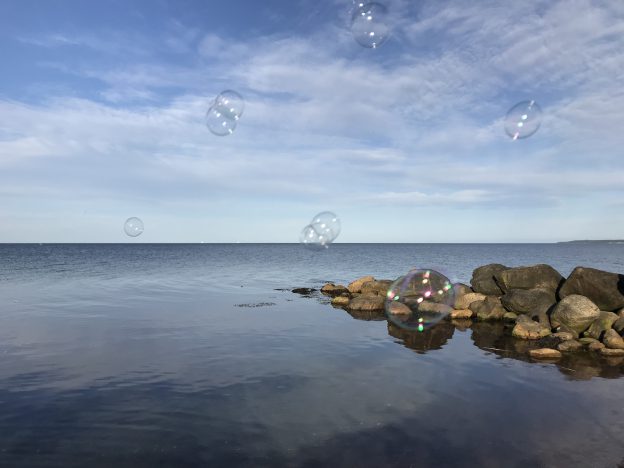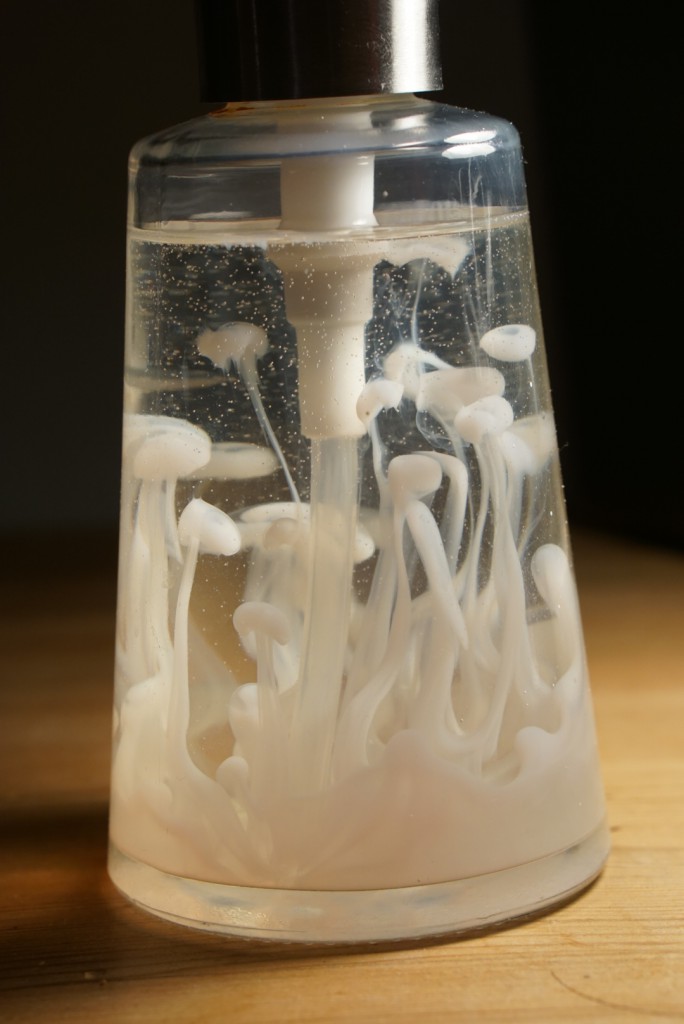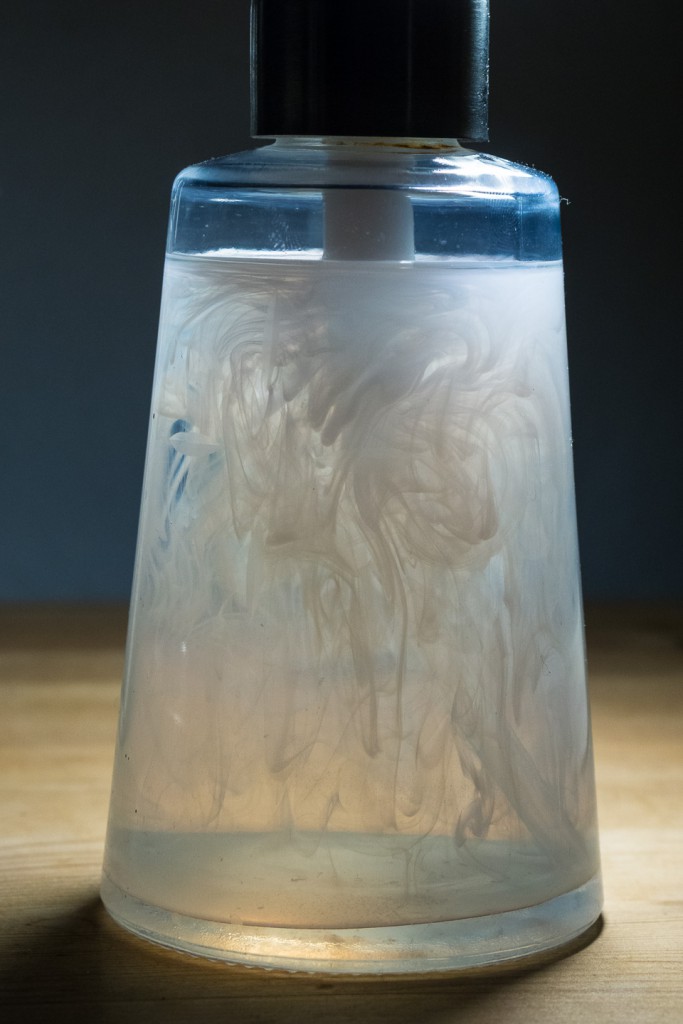I have too many soap bubble pictures from last weekend’s trip to Kleinwaabs to not write a post about soap bubbles. So let’s get right into it!
First thing I never actually thought about: Why do you want soap to make soap bubbles? Soap lowers water’s surface tension (and see my favourite surface tension experiment here!), so wouldn’t that make bubbles more fragile than just using water? Turns out that without soap, there are hardly any bubbles because water’s surface tension is so high that it tends to lump water together into compact round shapes: so just drops, no bubbles. Which I should have known right away, obviously. So we need the soap as surfactant to keep the insides of the soap bubble apart and prevent collapse into drops.
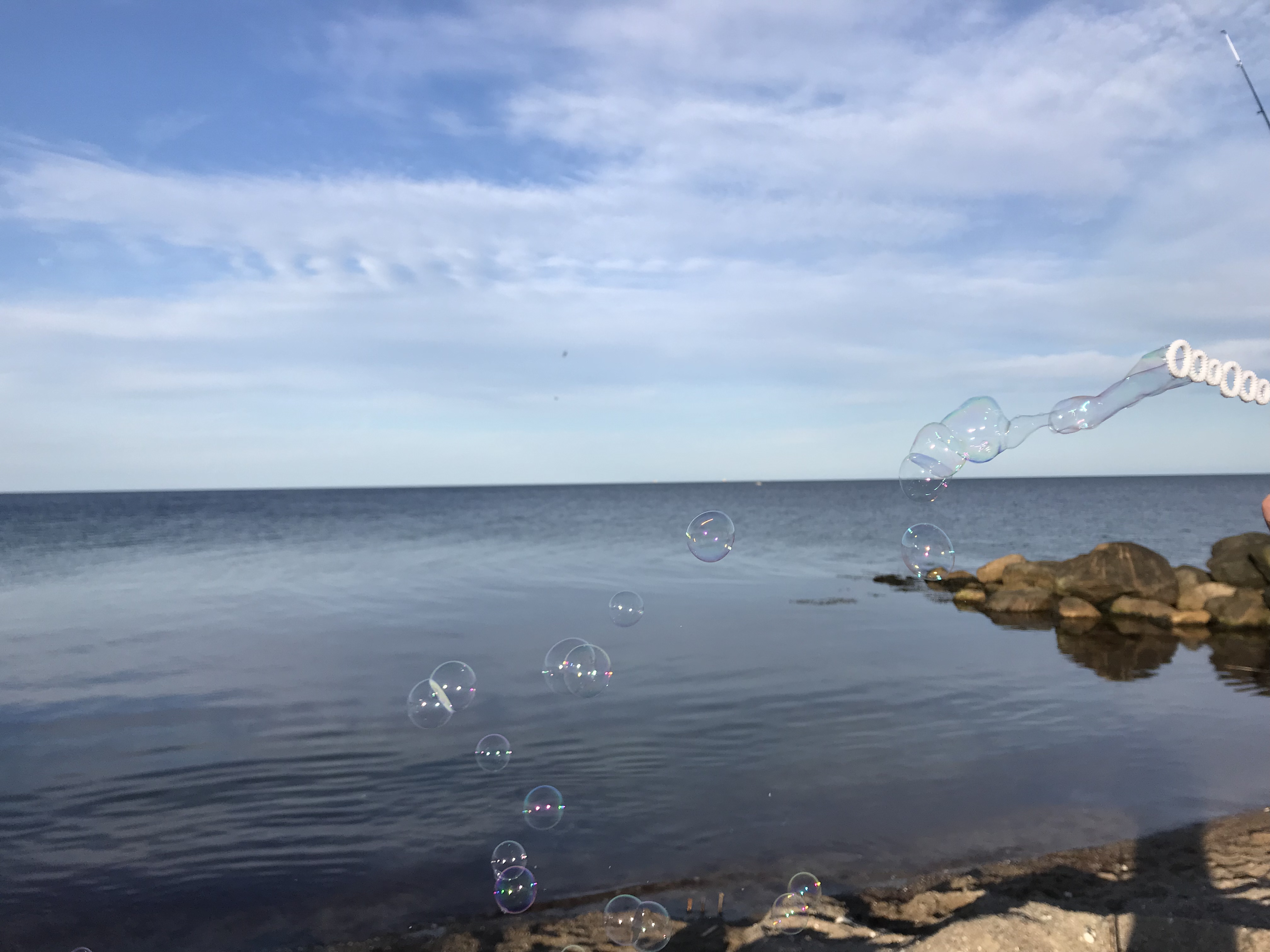
So let’s look at how soap bubbles form. When someone (Frauke in this case) blows at the soap bubble wand, at first something resembling a wind sock forms (see above). Only after a little while it detaches and closes off bubbles that float away.
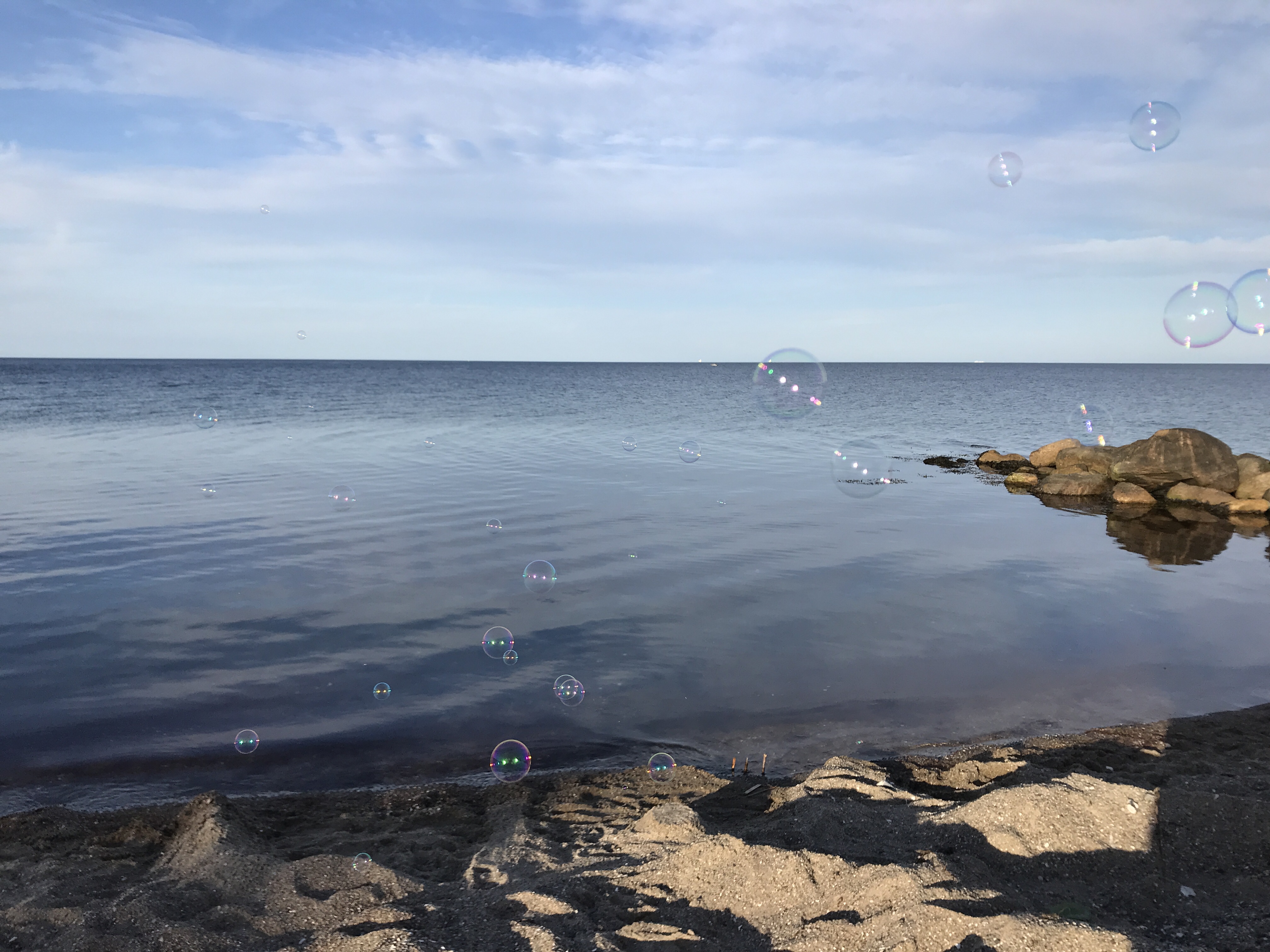
Soap in soap bubbles also produces the surface films that make soap bubbles look so pretty. And if you look at them closely, you can even see currents on soap bubbles as water and soap are flowing around on the surface!
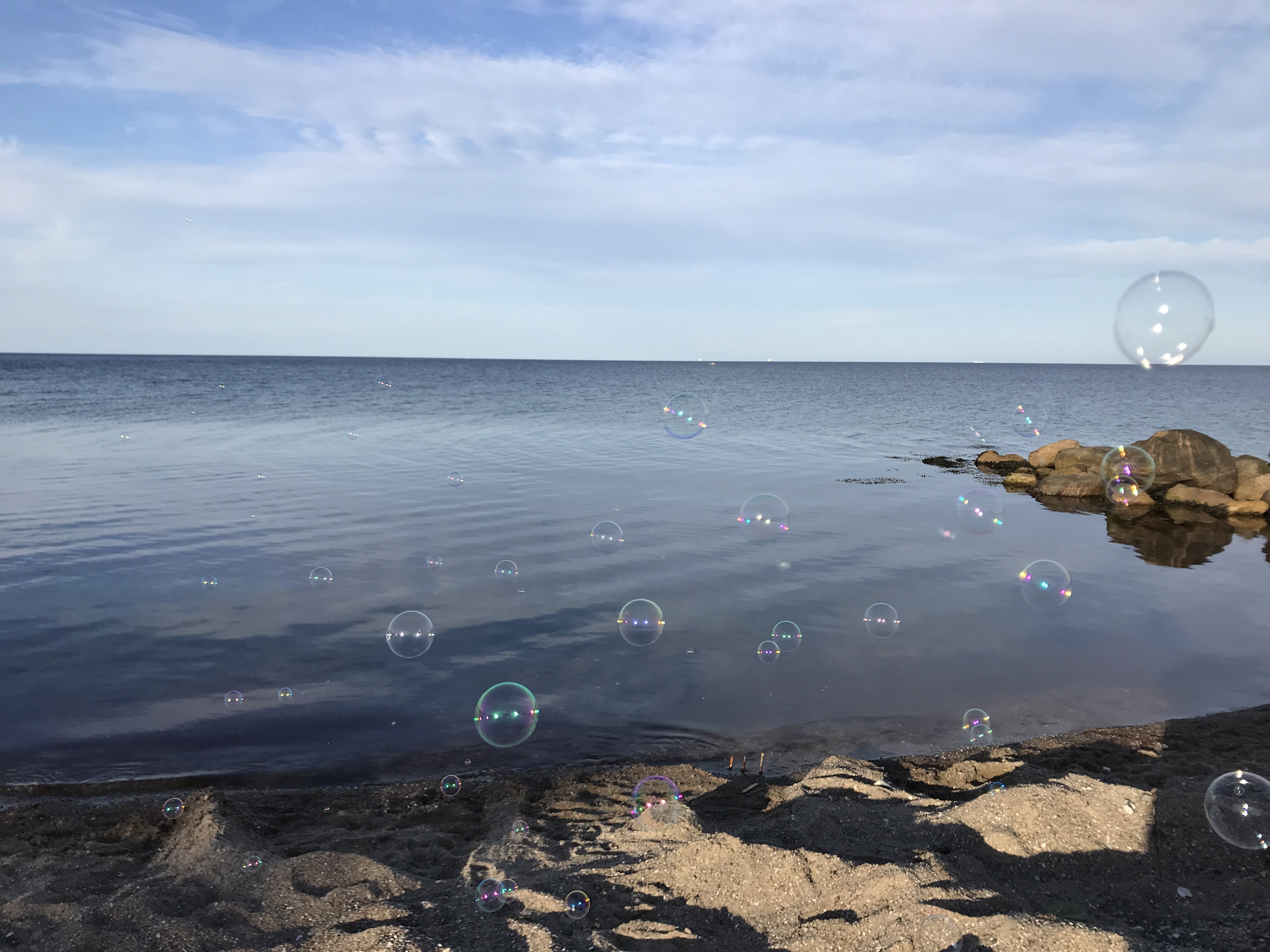
Those currents are also one of the mechanisms that will ultimately make the bubbles pop: As gravity pulls the denser water to the bottom of the bubble, the soap concentrates on top. The more soapy the water, the lower its surface tension, so at some point the surface tension becomes too low to keep the bubble together — it pops.
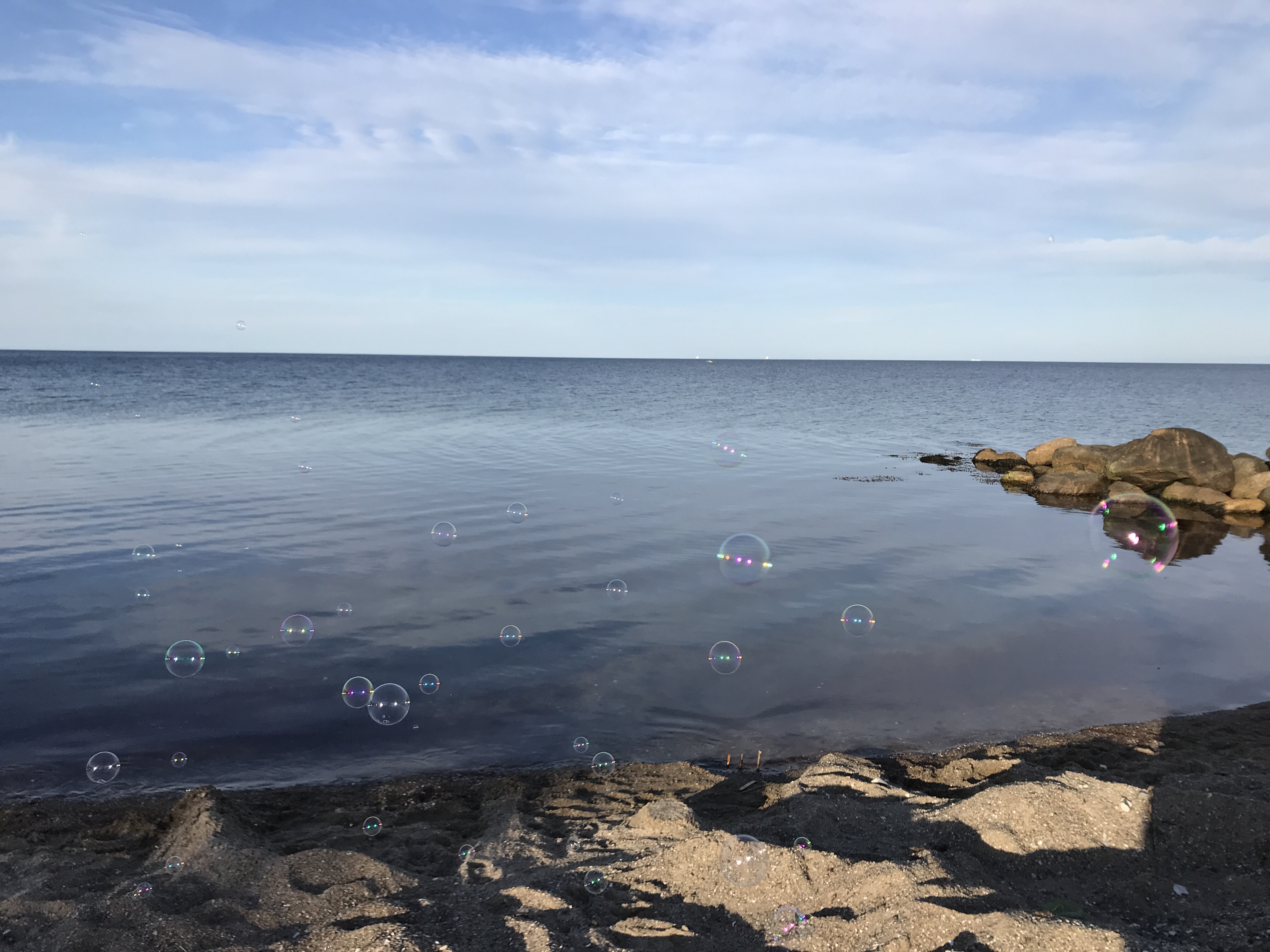
Another mechanism making bubbles pop is just evaporation: As bubbles have a large surface, water evaporates fairly quickly from it, thus leaving more and more soapy water in the bubble. Until, you guessed it, the surface tension becomes so low again that the bubble pops.
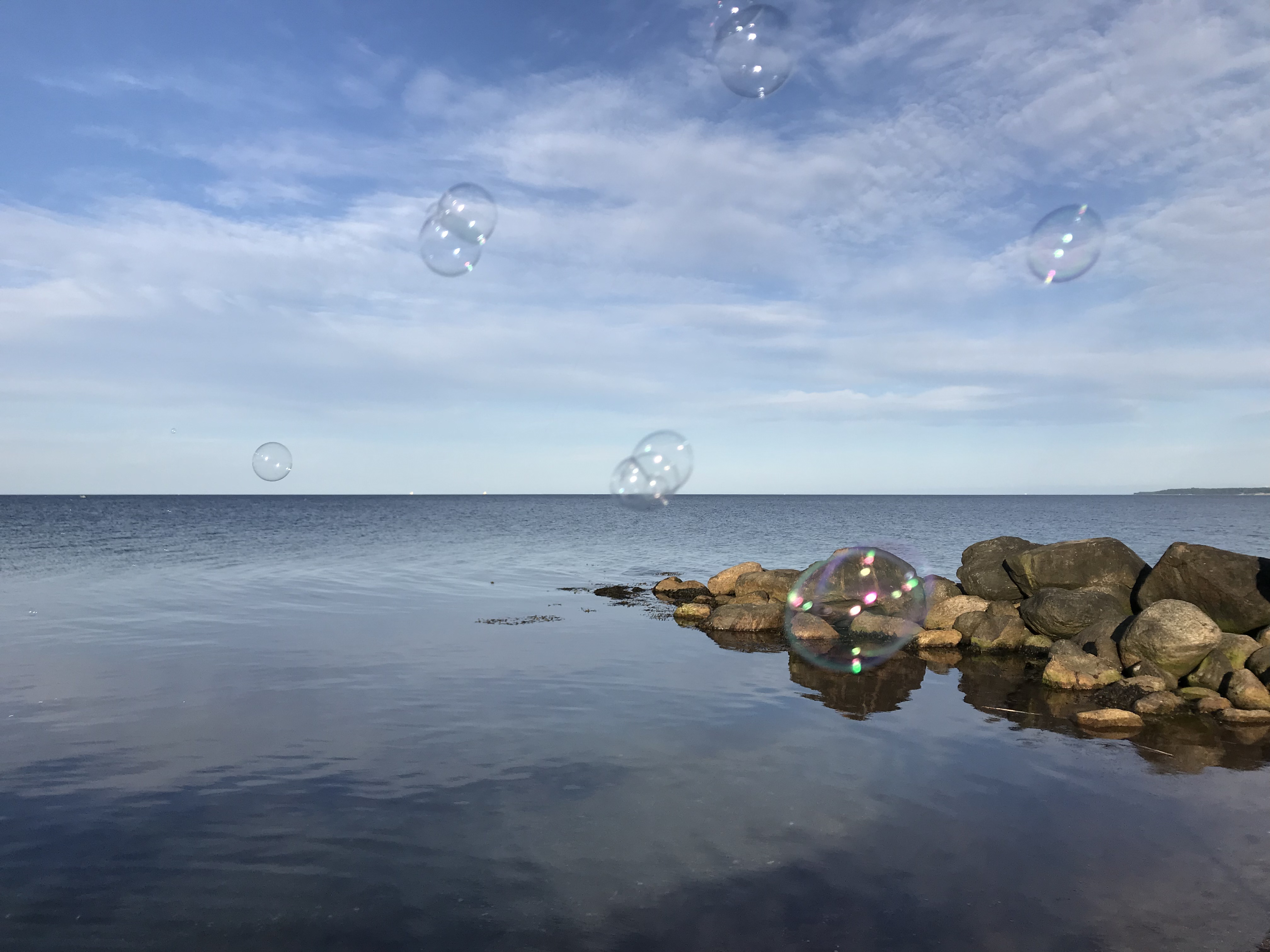
A third reason for bubbles popping is also them floating into something which then breaks the surface. If bubbles float into other bubbles, though, this usually doesn’t result into them popping — they stick together and form interesting shapes of round segments and straight dividing walls. Surface tension always tries to minimize the surface area, balancing inside and outside pressure, so these are the energetically best shapes.
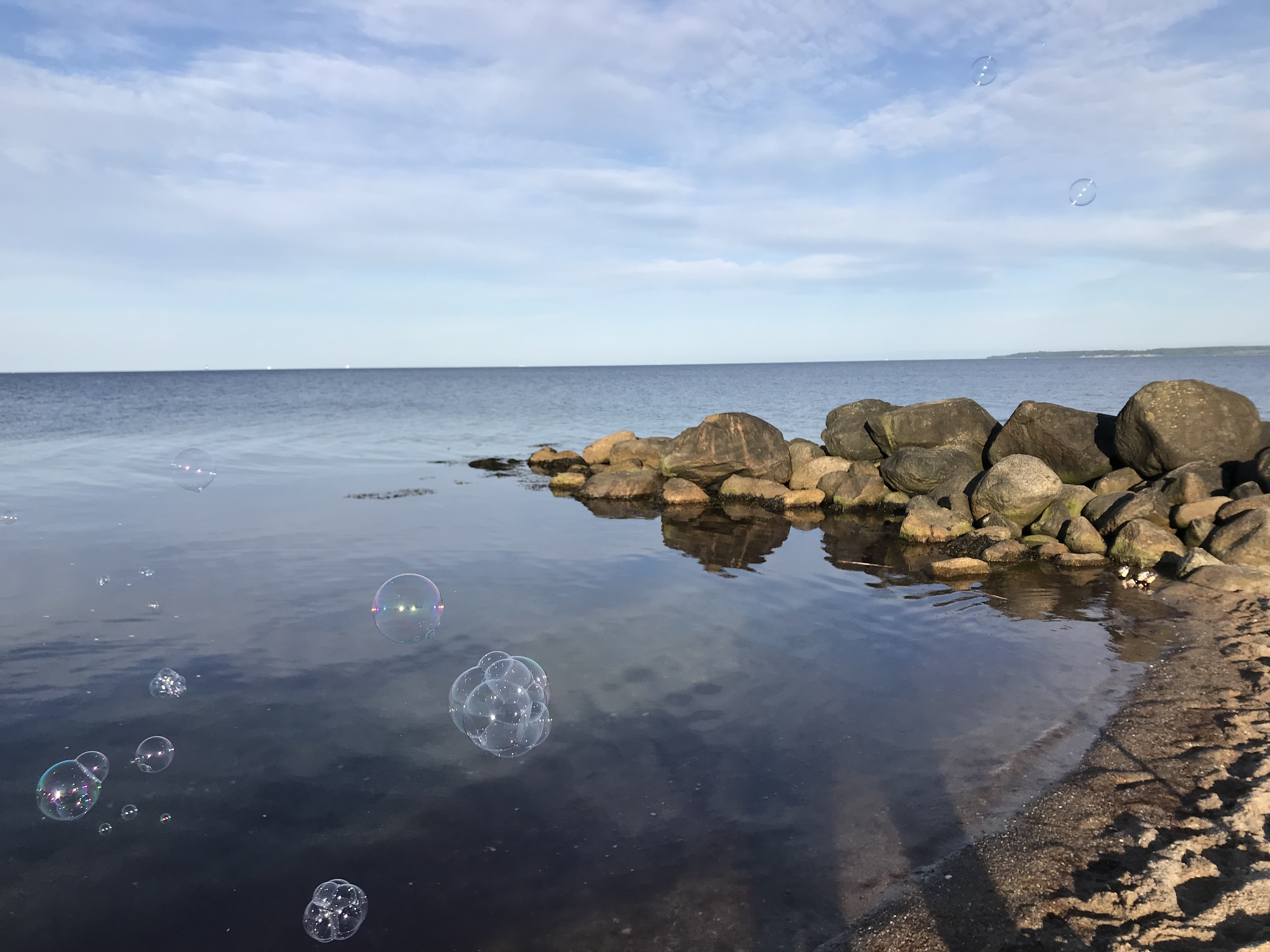
Interesting how that sometimes happens, while other times bubbles float nicely their separate ways, sparkling and shimmering in the sun.
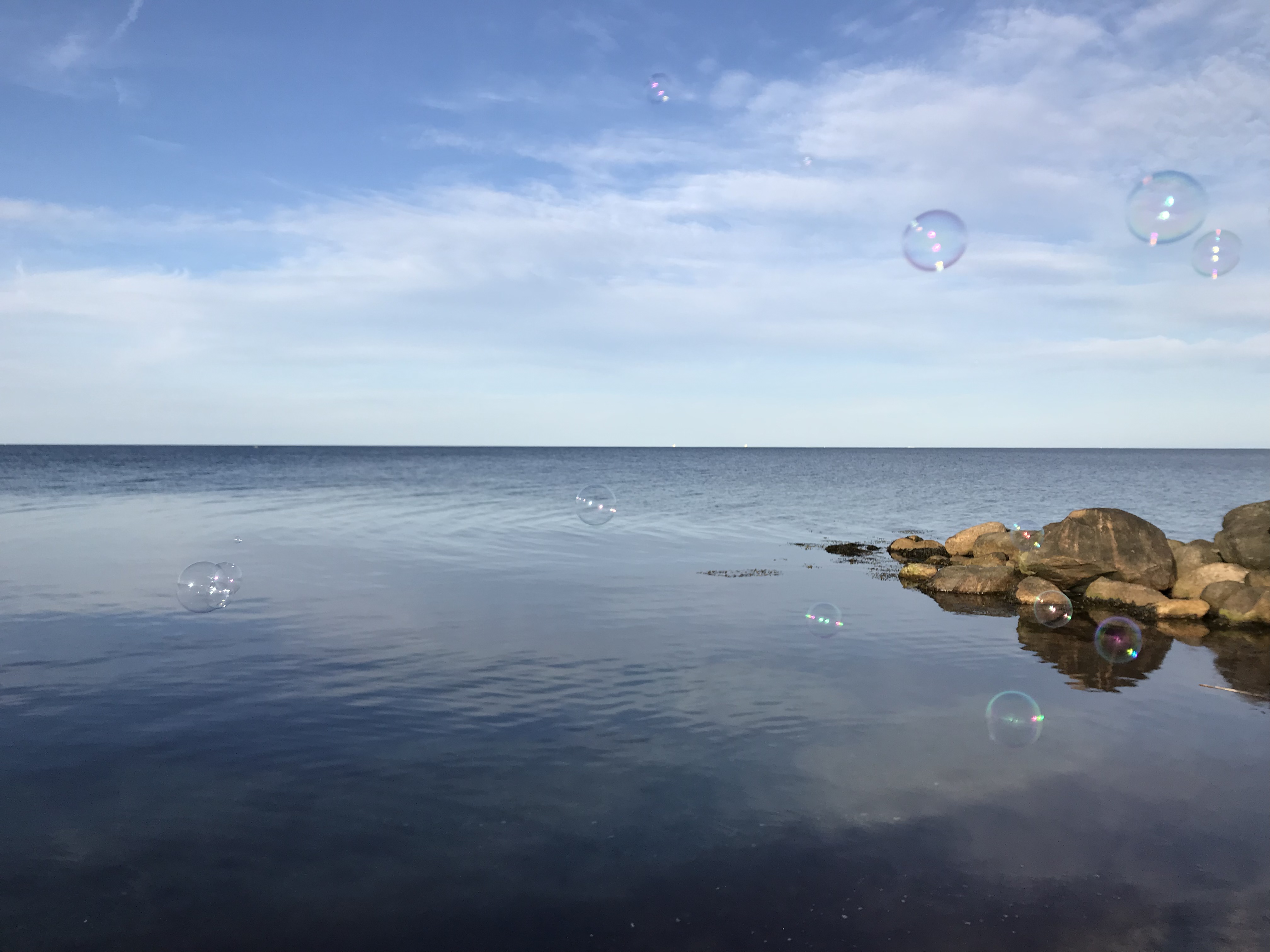
And funny how difficult it is to take pictures of soap bubbles. Thanks for your patience, Frauke! :-)
